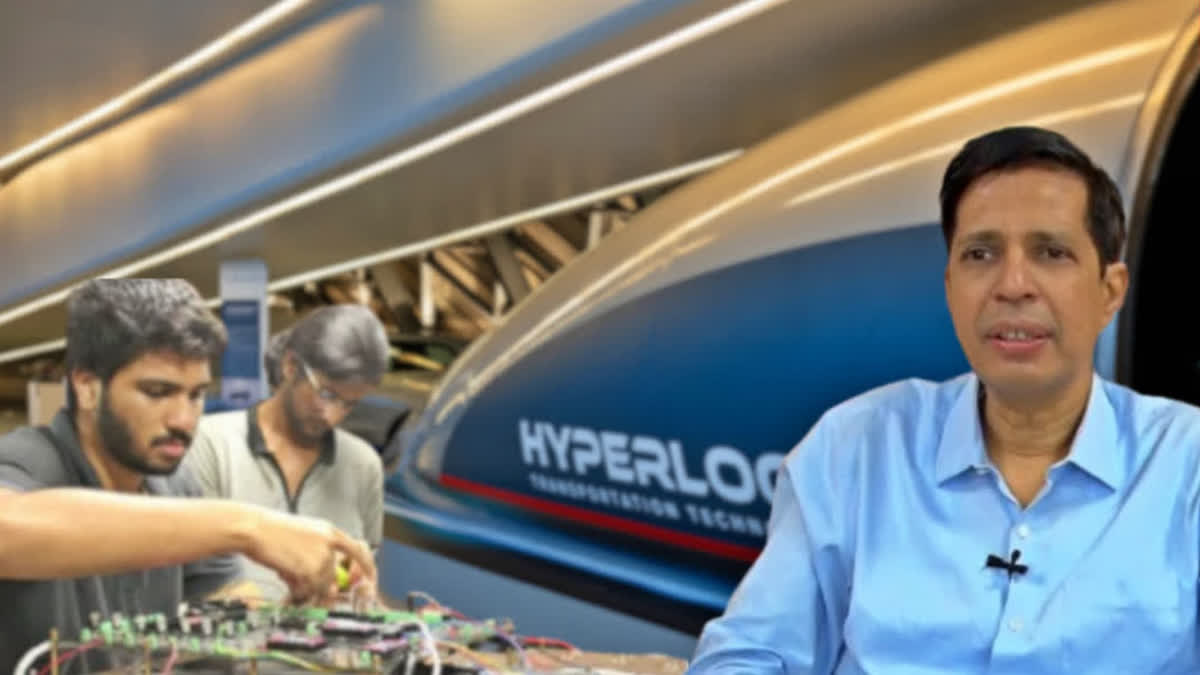IIT Madras Director Kamakoti (ETV Bharat) Chennai: In what could be a major breakthrough in the hyperloop technology in the country, researchers at the prestigious IIT Madras are working on the 'Avishkar' project to design various phases of the Hyperloop.
Although research on the hyperloop widely dates back to the 1960s, in 2012 American entrepreneur Elon Musk announced new research into the technology. The technology has not matured enough to come into use a decade ago. It is in this context that IIT Chennai has established a strong foundation for hyperloop technology in India.
For this project, a team of students at IIT-Chennai has been researching the Avishkar Hyperloop. The group consists of 76 undergraduate and postgraduate students in 11 different courses. The researchers are designing various phases of the Hyperloop.
The project broadly consists of three parts:
Loop (tube-like part with low air pressure)
Pod (coach-like vehicle)
Terminal (area where coaches stop)
Avishkar's team has developed a train called a pod in 3 phases. The modern designed hyperloop pod is named Garuda.
The loop path for the pod to travel on has been constructed at a distance of 425 meters for the trial run. It is learnt that an international level competition will be held on this track in the year 2025 at the complex set up in Taiyur next to Chennai. In a special conversation with ETV Bharat, Director of IIT Chennai Kamakoti said that the Hyperloop being designed by IIT, Chennai and will be researched in four phases.
“First is the design of the pod, which normally cannot go faster on a track. If it is lifted an inch above the track, it will go faster,” he said.
How To Activate Hyperloop?
Kamakodi said that the hyperloop works in the same way we see a plane going up in the air going faster and a car traveling on the road going slower using magnetic force (Levitation) in open space. However, the mechanism faces obstacles caused by the wind, he said.
At the next level, a tube can be placed in which the air pressure is reduced and driven by magnetic force, which can travel 500 to 600 km per hour. In the next 3rd stage the cargo can be sent inside the tube, followed by humans, added the IIT Director.
"We are doing research on what happens to a human when traveling at high speed in a vacuum tube. Research is being done in 4 stages. In the first stage, the test of flying a box using magnetic power has been completed. In the 2nd stage, we have designed and installed a tube for testing in vacuum at 425 meters,” he said.
He said that Asia's longest Hyperloop tube is installed at the IIT Madras facility.
“In addition to conducting tests, international level competitions also will be conducted. Anyone interested in Hyperloop technology can participate in it. Further motivating the laureates is the way to develop hyperloop technology," said IIT Director Kamakody. He said that the funding has been provided by L&T and Indian Railways to set up the research platform.
Responding to a question over a possible trial of the Hyperloop, he said, "Progress is also being made to transport it commercially. An organization called 'Center for Railway Research' is going to be started at the IIT Research Centre, Chennai. Under this joint venture, the government will make a vehicle called a pod after laying the track and send the cargo first”.
“We have to see how many kilos of cargo it carries. So it should be implemented step by step. Standard Operating Procedures should be followed while deploying human beings. Standard guidelines should also be designed for running Hyperloop,” he added.
International Hyperloop Competition: Dr Kamakody said that they are planning to conduct the Hyperloop International Competition between January and April 2025 on specific dates based on weather condition.
“We will conduct the tests in the Hyperloop tube set up at Taiyur campus. And anyone who is interested in this technology can do the test. We are also going to create opportunities to do so," he said.
"If the current 425 meter track works well, companies related to this technology will immediately come forward to lay tracks all over India. It will be used for freight transportation within two and a half years. Also, within 5 years, there is a good chance that this technology will be powered by electricity, so there will be no pollution,” he said.
